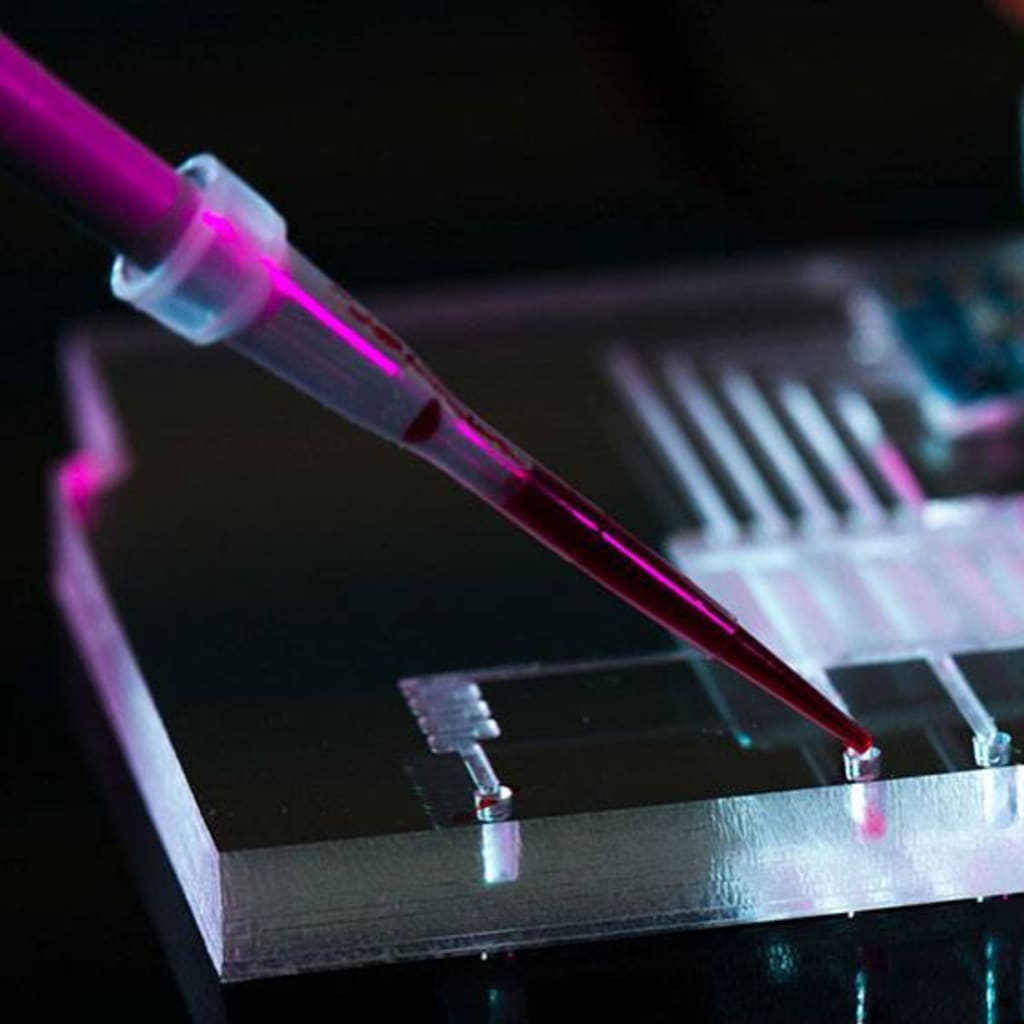Paper-based Microfluidic Devices for Prototyping
Paper-based Microfluidic Devices

It's acknowledged that the right selection of the material interface is of vital importance from research development to microfluidic platform applications and product transfer, in that one might be suitable for certain targeted applications but detrimental for another. The inherent microfabrication and specific physico‐chemical properties of each material dedicated to microfluidic applications are playing a dominant role in further microfluidic operability with both advantages and disadvantages.
Background
As microfluidic techniques were derived from the physics and engineering landscapes, early microsystems used silicon and glass, which have obvious shortcomings like complex and expensive processes. Though with beneficial traits like the good surface stability, chemical compatibility and electrical conductivity of silicon and optical transparency and high-pressure resistance of glass, these inorganic materials were gradually replaced by competitive polymers considering the cost of time, effort and money. And with the advancement of technology and higher requirements for microfluidic materials such as compatibility with biological samples, paper-based microfluidic chips are introduced as a possible key technology for the future.
About paper-based chips in microfluidics
Paper is considered to be a cheap and promising material for microfluidic chips. The advantages of the paper include ease of stocking, employment, and transportation, and it is compatible with biological samples and can be chemically modified to bond with molecules or proteins. Moreover, paper for microfluidic chips is proven to be environmentally friendly. However, it's undeniable that it's complex to pattern the channels on paper-based microfluidic chip devices.
Development of paper microfluidic devices
Traditional microfluidic systems usually have a pump and a chip, in which the pump will direct liquid to tiny channels on the chip, and liquid flows until it eventually encounters the diagnostic reagent that can chemically react with antibodies or agents and show an identifiable reaction. For instance, in a test for COVID-19, a saliva or mucus sample will carry through channels on the chip to microwells, where viral RNA is first converted to DNA and then amplified. If the SARS-COVID-2 virus is detected, PCR reagents will show reactions to indicate the result.
The previous applications of paper-based microfluidics in diagnosis are powered by liquid wicking, in which a liquid can flow due to specific geometries of the chambers without external forces. Though passive fluid handling has helped develop several tests for microfluidic non-invasive diagnosis, including the wicking-based paper devices commonly used in pregnancy tests and at-home COVID antibody/antigen tests, paper-based microfluidic devices are technically limited by the absence of active fluid control and the capillary transport variability due to surface evaporation.
Recent research conducted by a team from the Artie McFerrin Department of Chemical Engineering at Texas A&M University gets featured on the cover of Analyst. They have developed paper-based microfluidic devices using laminated paper, which allow external pressure sources such as pumps to guide porous microfluidic continuous flows. That's to say, such paper-based microfluidic devices can direct fluid through porous paper structures, just as accurately and precisely as conventional plastic microfluidic devices. Furthermore, this novel way is expected to be used in complex fluid handling systems such as PCR on microfluidic chips and DNA sequencing machines.
Researchers of this study indicated that their paper-based diagnostic devices require minimal equipment, meaning these microfluidic devices for diagnosis can be quickly prototyped and scaled for manufacturing purposes at a fraction of the cost of traditional microfluidic devices. Therefore, this finding could be an opportunity for manufacturers in the microfluidic industry to commercialize their products in an easy-to-accessible and inexpensive pathway.
Paper-based microfluidics is the branch of microfluidics involving devices made out of paper, or other porous membranes, that wick fluids by capillary action. Paper-based microfluidic devices have several advantages over conventional microfluidic devices including simpler fabrication, lower cost, easier disposal, and the ability to operate without pumps or other supporting equipment. The most common application of paper-based microfluidic devices is in the development of point-of-care (POC) diagnostic devices, which could eliminate the need for costly and time-consuming laboratory-based analytical procedures. This review provides an overview of current methods of fabricating paper-based microfluidic devices, examples of applications of these devices, a discussion of their current limitations, and an outlook on their future.





Comments
There are no comments for this story
Be the first to respond and start the conversation.